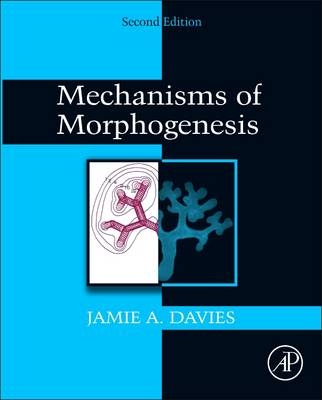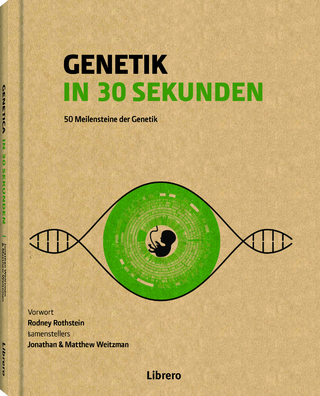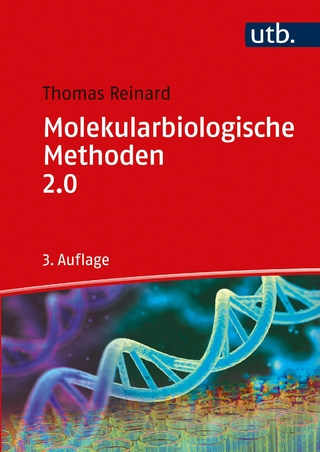
Mechanisms of Morphogenesis
Academic Press Inc (Verlag)
978-0-12-391062-2 (ISBN)
- Titel erscheint in neuer Auflage
- Artikel merken
Morphogenesis is the set of processes that generate shape and form in the embryo--an important area within developmental biology. An exciting and up-to-the-minute account of the very latest research into the factors that create biological form, Mechanisms of Morphogenesis, second edition is a text reference on the mechanisms of cell and tissue morphogenesis in a diverse array of organisms, including prokaryotes, animals, plants and fungi.
By combining hard data with computer modeling, Mechanisms of Morphogenesis, second edition equips readers with a much broader understanding of the scope of modern research than is otherwise available. The book focuses on the ways in which the genetic program is translated to generate cell shape, to direct cell migration, and to produce the shape, form and rates of growth of the various tissues. Each topic is illustrated with experimental data from real systems, with particular reference to gaps in current knowledge and pointers to future
Since 1995 Davies has run his own laboratory at the University of Edinburgh, with a multidisciplinary focus on discovering how mammalian organs construct themselves and how we can use apply knowledge to build new tissues and organs for those in need. Some of the work of his 20-strong research team is 'conventional' developmental biology; identifying signals and mechanisms used in natural organ development. Some is bioinformatic analysis (we host the editorial office of an international database for renal development – www.gudmap.org – funded by the USA National Institutes of Health, and the www.guidetopharmacology.org database, an international effort for the International Union of Basic and Clinical Pharmacology). Some of his work is in tissue engineering – his lab has recently developed a method to produce engineered 'fetal kidneys' from simple suspensions of stem cells, an activity that attracted considerable press attention last year. Finally, his lab is pioneering the application of synthetic biology techniques to tissue engineering, to 'program' cells to make structures that are designed rather than evolved. Davies has published around 140 research papers in the field of mammalian development, has published one major specialist monograph (Mechanisms of Morphogenesis, Elsevier, 2005 2nd Ed 2014), one public engagement book (Life Unfoloding, OUP, 2013 (Hardback), 2015 (paperback), now in translation also) and has edited three multi-author books in the fields of development, stem cells and tissue engineering. His contributions to research and teaching in this area have been recognized by having been elected a Fellow of the Royal Society of Biology, a Fellow of the Royal Society of Medicine and a Principal Fellow of the Higher Education Academy. Davies served as Deputy Chair of the National Centre for 3Rs, a government agency that promotes research that refines, reduces or replaces animal experiments. He has also served as Editor-in-Chief of the research journal Organogenesis for 8 years, and is currently an Editor of Journal of Anatomy and PLOS One.
1) Introductory Section1.1 General introduction1.2 Key principles of morphogenesis1.3 The power and limitations of self-assembly2) Cell shape and the cell morphogenesis2.1 Morphogenesis by changing cell shape: a brief overview2.2 Shape in animal cells: tensegrity2.3 Making cellular processes2.4 Shape in plant cells3) Cell Migration3.1 Cell migration in development: a brief overview3.2 The nanomachinery of locomotion3.3 Guidance by chemotaxis3.4 Guidance by galvanotaxis3.5 Guidance by contact3.6 Waypoint navigation in the embryo3.7 Condensation of cells4) Epithelial Morphogenesis4.1 The epithelial state – brief overview4.2 Neighbour exchange and convergent extension4.3 Closure of holes4.4 Invagination and evagination4.5 Epithelial fusion4.6 Epithelial Branching5) Morphogenesis by cell proliferation and death 5.1 Growth, proliferation and death – a brief introduction5.2 Morphogenesis by orientated cell division5.3 Morphogenesis by elective cell death6) Conclusion and perspectives
| Verlagsort | San Diego |
|---|---|
| Sprache | englisch |
| Maße | 191 x 235 mm |
| Gewicht | 1070 g |
| Themenwelt | Naturwissenschaften ► Biologie ► Genetik / Molekularbiologie |
| Naturwissenschaften ► Biologie ► Zellbiologie | |
| Naturwissenschaften ► Physik / Astronomie ► Mechanik | |
| ISBN-10 | 0-12-391062-5 / 0123910625 |
| ISBN-13 | 978-0-12-391062-2 / 9780123910622 |
| Zustand | Neuware |
| Informationen gemäß Produktsicherheitsverordnung (GPSR) | |
| Haben Sie eine Frage zum Produkt? |
aus dem Bereich



